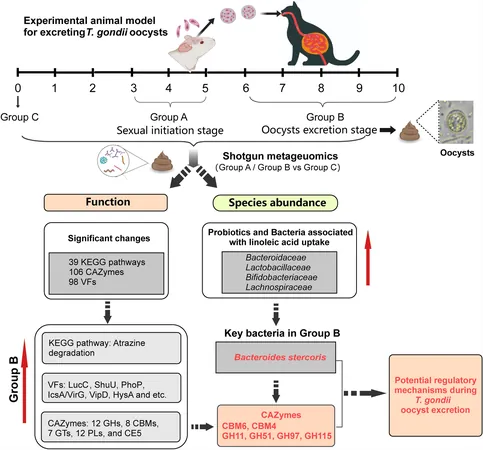
Unlocking the Flooding Mystery: How Wet Soils Heighten Risks During Atmospheric Rivers
2025-06-16
Author: Wei
Atmospheric Rivers: A Double-Edged Sword
Atmospheric rivers are notorious for wreaking havoc on the West Coast of the U.S., where they typically result in significant flooding. However, they also deliver essential moisture. Yet, the storm's sheer size doesn’t always correlate to a flood risk. A groundbreaking study sheds light on the true culprits behind these floods, helping communities fortify their defenses against future deluges.
The Study That Changes Everything
Published on June 4 in the Journal of Hydrometeorology, researchers delved into over 43,000 atmospheric river events across 122 watersheds from 1980 to 2023. Their findings revealed a startling truth: the moisture level of the soil before a storm plays a critical role in flooding. When soils were already saturated, flood peaks skyrocketed—averaging 2 to 4.5 times higher than when soils were drier. This explains why some powerful storms result in catastrophic floods, while similar storms yield little more than rainfall.
Soil Saturation: The Game-Changer in Flooding
Lead researcher Mariana Webb, a Ph.D. candidate at DRI and the University of Nevada, Reno, emphasized, "Flooding is not just about storm size but also the conditions on land. This study highlights the crucial influence of pre-storm soil moisture on flood events." Interestingly, the relationship isn’t linear; there’s a critical moisture threshold beyond which flood risks dramatically increase.
Where Soil Conditions Matter Most
The study further identified areas where soil moisture contributes most to flooding risks. In drier regions such as California and southwestern Oregon, storms striking saturated soils are more prone to cause floods due to their shallow, clay-heavy soils and limited water retention capabilities. Conversely, lush regions like Washington, with deeper soils and snowpacks, tend to mitigate flooding risks despite some soil saturation.
Enhancing Flood Predictions with Soil Data
Webb and her team aimed to pinpoint watersheds where understanding soil moisture could refine flood risk assessments. By focusing on arid climates, where soil moisture fluctuates more due to evaporation, they believe flood predictions can be significantly improved. Currently, soil moisture data is sparse compared to rainfall measurements, making real-time monitoring in high-risk areas crucial to developing effective early warning systems as atmospheric river events grow more frequent.
Bridging Atmospheric Science and Hydrology
With input from DRI ecohydrologist Christine Albano, Webb’s work bridges the gap between atmospheric science and hydrology—two fields that often operate in silos. Albano noted, "While soil saturation is a known factor in flood risk, this research quantifies when saturation leads to drastic increases in risk across the West Coast." By combining storm forecasts with soil moisture levels, flood early warning systems can be significantly enhanced.
A New Era of Flood Management
As atmospheric rivers continue to pose a formidable challenge, this research equips water management authorities and communities with the knowledge they need to adapt and prepare. It showcases a vital intersection of climate science and practical application, affirming that understanding the land is just as critical as forecasting the storms.



 Brasil (PT)
Brasil (PT)
 Canada (EN)
Canada (EN)
 Chile (ES)
Chile (ES)
 Česko (CS)
Česko (CS)
 대한민국 (KO)
대한민국 (KO)
 España (ES)
España (ES)
 France (FR)
France (FR)
 Hong Kong (EN)
Hong Kong (EN)
 Italia (IT)
Italia (IT)
 日本 (JA)
日本 (JA)
 Magyarország (HU)
Magyarország (HU)
 Norge (NO)
Norge (NO)
 Polska (PL)
Polska (PL)
 Schweiz (DE)
Schweiz (DE)
 Singapore (EN)
Singapore (EN)
 Sverige (SV)
Sverige (SV)
 Suomi (FI)
Suomi (FI)
 Türkiye (TR)
Türkiye (TR)
 الإمارات العربية المتحدة (AR)
الإمارات العربية المتحدة (AR)